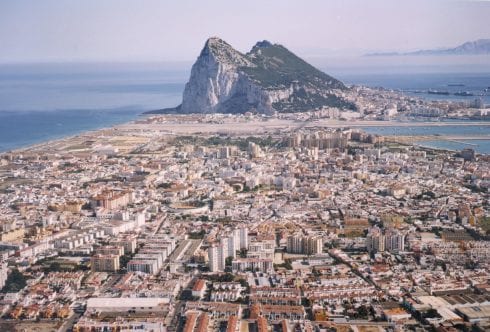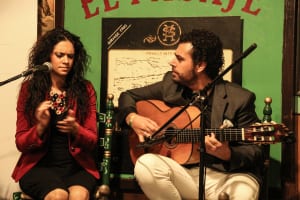‘GIVE me a cup of sack to make my eyes look red, that it may be thought I have wept,’ proclaims a drunken Falstaff in Henry IV Part 1.
Shakespeare’s most famous fool wasn’t daft when it came to appreciation of the nectar of Jerez – sherry, or ‘sack’ as it was called in The Bard’s day.
Falstaff recommended it for warming the blood and sharpening the wit, but while he became dumber from it, the city of Jerez has grown in stature on the strength of its famous fortified wine.
The sharp musty scent of the bodegas infiltrates the peaceful backstreets of Europe’s current Capital of Wine. Everywhere you look, there’s Tio Pepe in his rakish scarlet sombrero, keeping an avuncular eye on the proceedings.
The eye-catching logo of the Gonzalez Byass bodega competes for attention with the many other sherry giants, including Lustau, Domecq and Harveys. And Jerez has been relentless in advertising its top tipple across the world, just one of the assets that it has cleverly exploited to earn a global reputation.
Another of those assets is horses. The Carthusian breed of Andalusian thoroughbreds were originally war horses, historically given as gifts to European monarchs and today used for everything from dressage to polo.
Visitors can witness fantastic displays of agility, intelligence and an immaculately-choreographed ‘equine ballet’ at the Royal Andalusian School of Equestrian Art, a short walk from the city centre. The show runs regularly throughout the summer and every Thursday throughout January and February.
But for many the big draw is flamenco. Jerez takes it so seriously that an entire zone – the twin gypsy barrios of Santiago and San Miguel – is dedicated to this spectacular art form.
So it was with great anticipation that I set off for the most highly-rated flamenco bar in the city, the Tabanco el Pasaje, to witness the spectacle first hand.
Gaining entry to this popular nightspot, the oldest tabanco in Jerez, isn’t easy! More tightly packed than sherry barrels in a bodega, we had to elbow and squeeze our way through the heaving crowds to the bar, where sherry in all its infinite varieties – fino, oloroso, amontillado, cream – is still traditionally served ‘from the wood’.
Back in the day, tabancos (basically meaning tavern) were smoky, sand-floored, male-only haunts filled with the sounds of impromptu flamenco.
Today it’s a more egalitarian scene, with better flamenco, and tonight was the final Saturday of the 3rd International Semana del Dia Internacional del Flamenco. Trust the Jerezanos to turn one day of festivities into a whole week!
Having had the forethought to book a table near the front – the last empty table in the place – the cry went out to make way for ‘las rubias’ and the crowd parted like the Red Sea. We couldn’t have had a warmer welcome had we been celebrities, and they frequent El Pasaje too. Hollywood super-couple Ashton Kutcher and Mila Kunis apparently got very drunk here in September 2013 (if the bar staff are to be believed)!
At El Pasaje, prepare for the unexpected. Three young children suddenly popped out of the crowd and sat down at our table, one wasting no time in asking for my phone number! That was 11-year-old Manuel! And before we could come up with a witty retort, he was beckoned on stage to perform with his younger brother and sister.
A crescendo of clapping rose through the tabanco as the trio twirled and stamped to the musicians’ songs in a bravura display that belied their years.
They had been sitting on their abuelas’ laps only a short while before, proving that pick-up lines aren’t the only thing Spanish boys learn at a young age!
It is really worth looking out the old gypsy quarter of Santiago, which pounds with particular passion and has a couple of lovely big flamenco statues, including charming Lola Flores, who was born here!
Dutch-born Chris Goivaerts echoes the view of many residents when she says, “Jerez is a little like Sevilla, but much quieter because most tourists come for the bodegas or the horse riding or the flamenco, and don’t stay to see what else we have to offer. We also have loads of culture, lots of churches and cultural centres, but people don’t realise.” Chris should know. She has lived in Jerez for 10 years and works as a tour guide.
Everywhere you look, there are clues to the culture that underlies the city’s success. The unbelievably grand buildings, interspersed with churches and monasteries, tell other stories of the city’s turbulent past.
Like most towns in Andalucia, Jerez has hosted most of history’s greatest civilisations through the ages – the Phoenicians, Greeks, Romans, Moors, Spanish and British – and she bears the scars and embellishments from every era.
The ‘de la Frontera’ suffix is one give-away. Jerez saw more conflict than most, as a border town between the Moorish and Christian kingdoms of Spain.
A stroll through the backstreets turns up a bevy of beautiful buildings, many given a new lease of life as cultural centres, such as the Andalucian Centre of Flamenco. This architectural grand dame is home to the largest public archive dedicated to flamenco, containing over 3,000 books and 800 music scores, as well as an extensive newspaper library.
For a small city, Jerez boasts an unusually large number of churches, with 17 in the centre alone. The two tourist favourites are the stunning 15th century Iglesia de San Marcos, one of the first to be built after the Reconquest on the site of the old Moorish mosque; and the Iglesia de San Miguel in the gypsy quarter named after it. Wikipedia also lists 22 palaces, while many more have been turned into boutique hotels.
Other architectural highlights include the Alcazar with its Mezquita and Arabic baths, the Cathedral of San Salvador and the Gothic church of San Mateo, the oldest in the city.
Among the more obscure attractions is the curious and tragic El Senor de la Puerta Real, off Plaza del Arenal in Calle Consistorio. A shrine to the families of the sick, it is flanked by boards decorated with the artificial limbs and plaited hair of those who succumbed to their illnesses.
Tour guide Chris highlights this as one of her favourite spots in the city, not from a love of the macabre but because of idyllic Plaza del Arenal, made for whiling away a lazy Sunday afternoon.
Surrounded by bars, and with a traditional carousel in the centre, it’s a magnet for the smart Jerezano set and their equally well-dressed and be-ribboned offspring.
Expat Justin Roberts, who has been living in Jerez for nine years after moving from London, says the city is a great place to raise children.
“It’s ideal for families and for retired people,” says the father-of-two. “It’s a small place so it’s very easy to get around, but it’s big enough to have a bit of quality and to feel like there’s a lot going on.”
Elena Norwanda agrees. “I love being able to cycle everywhere because it’s such a compact city,” this 24-year-old local tells me as we watch a group of teenagers play kick-ups with oranges in the Plaza.
“It means that, wherever I go, I’m always bumping into friends. It has a lovely community atmosphere.”
What Jerez lacks in size she more than makes up for in her calm, lazy beauty.
Although almost everyone compares her to her bustling big sister, Sevilla, she has a gentler, more laid-back disposition, not drunk but never quite sober: a heaven for hedonists, pleasantly tipsy on good food and sherry wine, sunshine and laughter.








The artificial limbs at the Puerta Real shrine most definitely do NOT represent those who succumbed to their illnesses, but rather those who claim to have been cured after praying at the shrine. We’re talking miracles here.